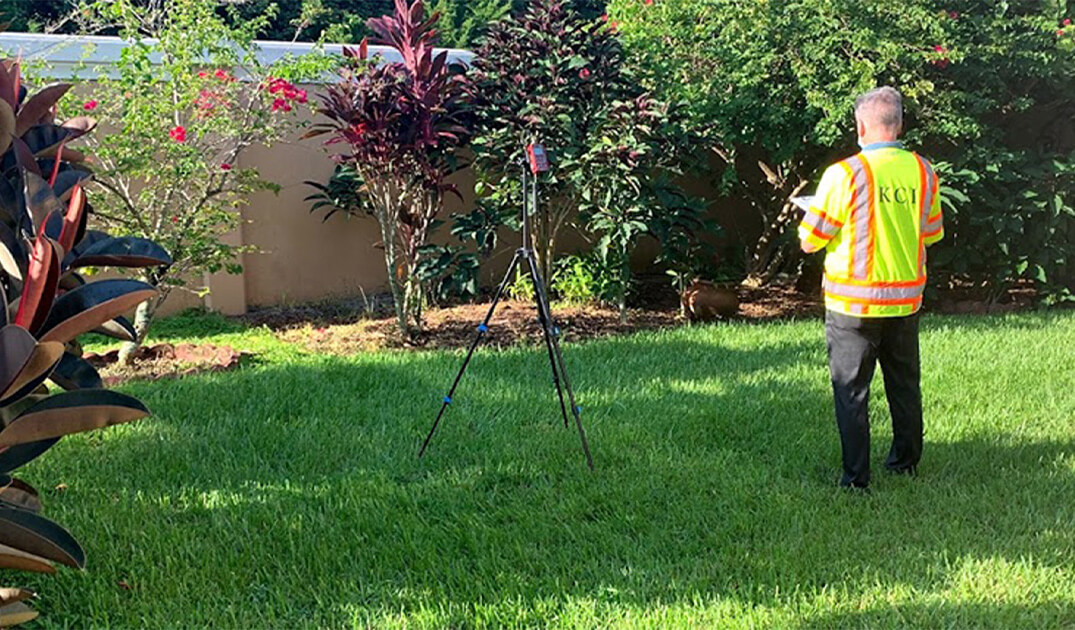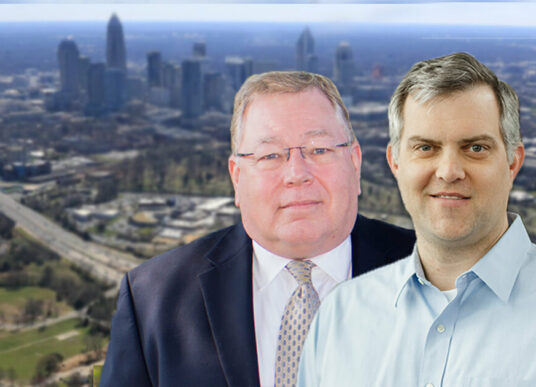Unwanted noise from highway traffic is a common concern for nearby residences and businesses. Noise can disturb residents and interfere with day-to-day conversations, sleep, work, and recreational activities.
In Port St. Lucie, Florida, construction of the much-anticipated Crosstown Parkway corridor extension featured 10 miles of a beautifully landscaped six-lane parkway and a bridge over the St. Lucie River. Shortly following construction, the city began receiving noise complaints from the surrounding residential community, especially in the vicinity of the Floresta Drive/Crosstown Parkway Superstreet Intersection. In response, the City contracted KCI to conduct a post-construction traffic noise monitoring study involving 36 single-family residences.
Several homes were removed during construction, causing residences previously situated two or three rows away from the existing roadway to become closer to the new corridor. Noise berms and densely landscaped vegetation were included in construction, but residents noted that although they blocked the view of the parkway, they did not adequately mitigate the traffic noise. Complaints also focused on how usage of the turnarounds, designed to navigate through the intersection of the parkway and superstreet, often resulted in multiple and repetitive noise events. Between cars revving their engines at stoplights, motorcycles, modified muffler systems, radios and other roadway activities, residents were finding it increasingly difficult to have backyard conversations.
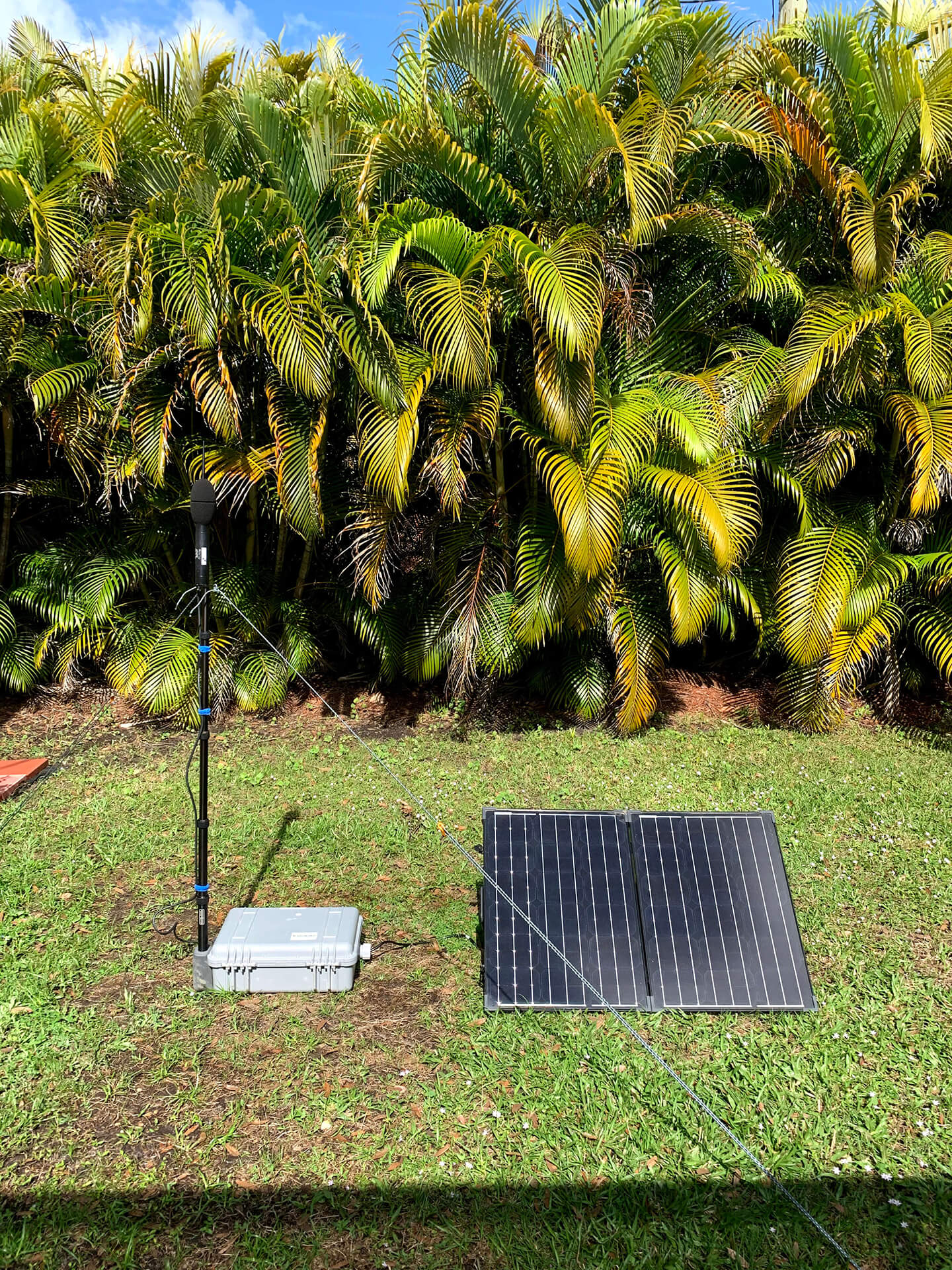
Sound barriers help break the line of sight and reduce noise from a highway by absorbing, reflecting, or focusing the sound to take a longer path around the barrier.
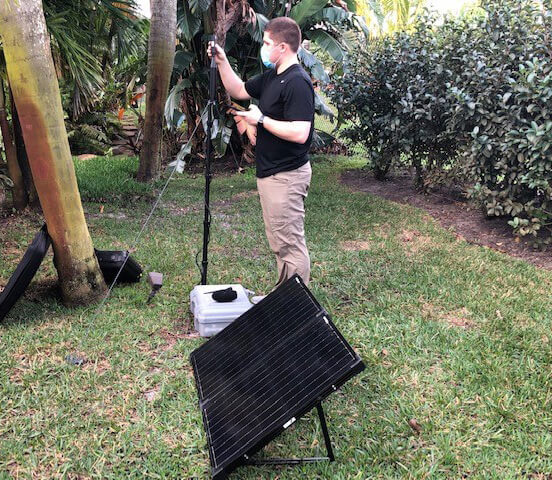
The noise meters used for the 24-hour study had the capability to audibly record noise events, including vehicles with modified or loud muffler/exhaust systems, tire noise, motorcycles, heavy trucks, general traffic, and music.
Although people react to sounds differently, noise regulations and standards developed by the Federal Highway Administration (FHWA) and Department of Transportation (DOT) provide criteria to mitigate or minimize highway traffic noise to help protect public health, welfare, and livability. Following specific procedures, traffic noise studies can be conducted to determine the existing noise level in an area and the impacts that may occur. In Port St. Lucie, our team was first asked to conduct a short-term noise monitoring study. Taking place on eight separate days over the course of a month, technical staff monitored continuous traffic flow for 30-minute increments to measure the average sound energy level, or dB(A) Leq, during peak traffic hours.
Throughout the duration of the study, noise levels ranged from 52.2 to 64.8 dB(A) Leq, none of which approached or exceeded criteria set forth by the FHWA or Florida Department of Transportation (FDOT). This indicated that the constructed noise berms were working as predicted.
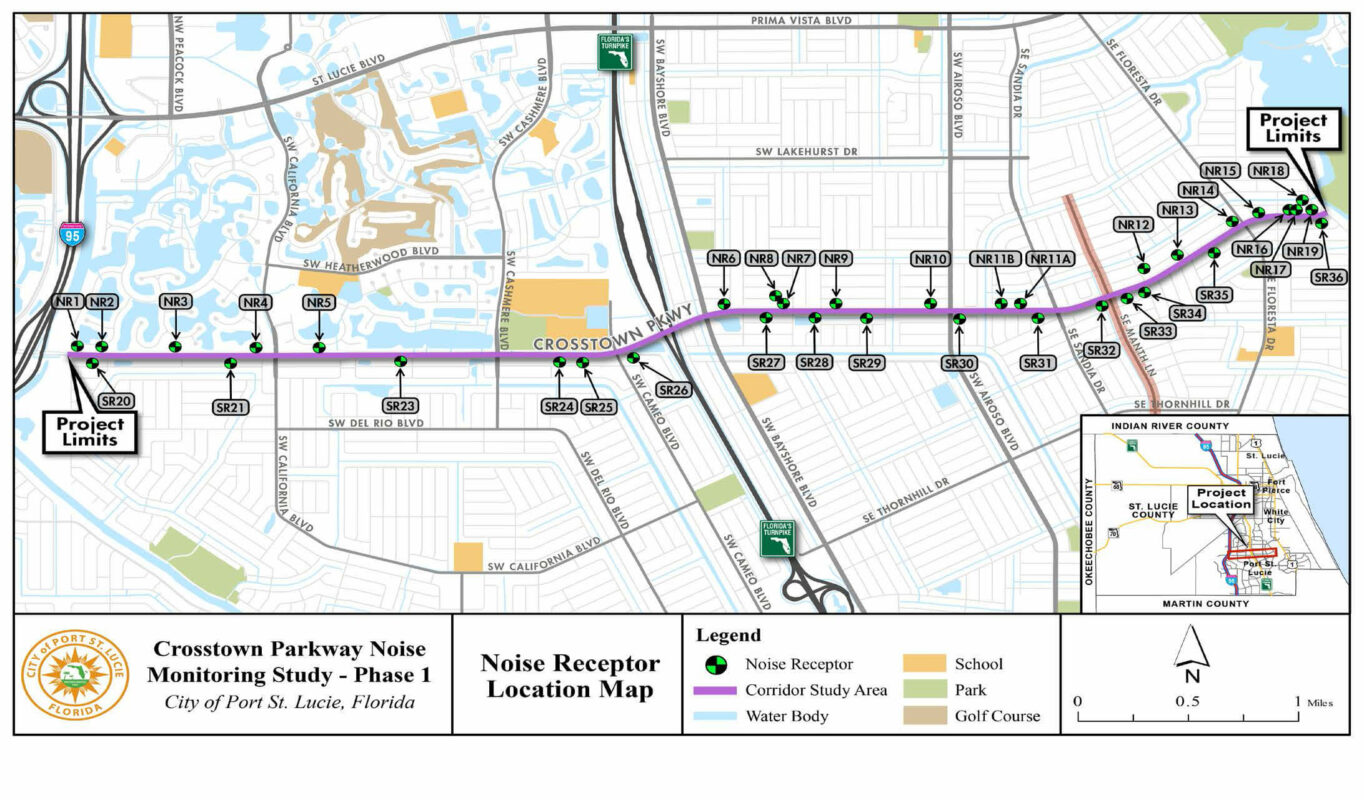 The FHWA defines a noise impact as approaching 67 dB(A). During phase 1, our team monitored 36 sites along the corridor to evaluate the effectiveness of noise berms and address noise concerns as a result of the Crosstown Parkway construction.
The FHWA defines a noise impact as approaching 67 dB(A). During phase 1, our team monitored 36 sites along the corridor to evaluate the effectiveness of noise berms and address noise concerns as a result of the Crosstown Parkway construction.Our team heard from several residents that although traffic volumes are heaviest during the day, a consistent law enforcement presence helps regulate noise during these hours. They emphasized that noise was the worst during evening and early morning hours. Based on this input, KCI was asked to conduct a second study over five continuous days between Thursday and Monday and provide the findings to the city for evaluation of noise mitigation strategies. Focused on residences adjacent to Crosstown Parkway, the 24-hour noise monitoring study aimed to determine whether evening and early morning noise levels exceeded the FHWA Noise Abatement Criteria, as well as the types and number of potential noise disturbance events that may be interfering with residents’ activities.
“We were able to develop trust with the community where the bulk of the noise monitoring complaints had been occurring and work with them to pursue additional monitoring to address their concerns.”
– Andrew Smith, Regional Practice Leader
Our team used portable noise monitoring meters in eight locations to record continuous one-hour periods simultaneously. The meters were programmed to audibly record noise events measuring 65.5 dB(A) Leq or greater to listen first-hand to what the residents were hearing. Over the course of the study, more than 2,500 potential noise disturbance events were cumulatively captured which helped verify the noise issues that the residents were experiencing.
Following the second study, our team prepared a presentation for the Mayor and City Council to present their findings and recommendations. “KCI’s goal was to develop graphics that conveyed the technical information we gathered in an easily understood and attractive manner to help inform the city’s decision-making process regarding the severity of the problem and effective mitigation solutions,” said Brandan Glorioso, transportation planner. Through monitoring efforts, engineers determined that the greatest number of noise disturbance events came from vehicles having modified muffler systems. The city began discussing implementing an awareness campaign regarding illegal muffler systems and increasing police enforcement patrols. Another noise source came from westbound traveling vehicles speeding over the Crosstown Parkway Bridge. A recommended mitigation measure included placing LED speed detection signs at the base of the bridge to alert drivers of their speed and signage noting that vehicles were entering a noise sensitive area. During the special council meeting, the mayor also requested that the Public Works Department evaluate additional progressive noise abatement strategies, such as purchasing and reselling first row homes along the parkway and evaluating the cost of installing hurricane protection windows to weatherize and help soundproof the residences.
Pleased with our team’s ability to present our findings and recommendations in a way that helped the council and public decipher the technical subject matter, former Mayor Gregory J. Oravec asked others to use KCI’s presentation as a model for what an information teaching presentation should look like. With our data in hand, Port St. Lucie can better address residents’ concerns and implement solutions to mitigate the issue of traffic noise emitting from the Crosstown Parkway.
